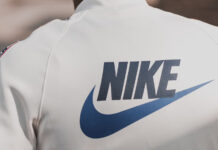MIT researchers have created an elastic fibre embedded with autonomous programmable computer technology, capable of monitoring health conditions and physical activity in real time. This innovation, which is both machine washable and comfortable, integrates seamlessly into clothing, making the fibres nearly imperceptible to the wearer.
Unlike conventional wearables that monitor health metrics from a single point, like the wrist or chest, these fibre computers leverage the advantage of close contact with large areas of the body and vital organs, presenting a unique opportunity to gather and analyse physiological data.
The fibre computer is equipped with various microdevices, including sensors, a microcontroller, digital memory, Bluetooth modules, optical communications, and a battery, effectively encapsulating the components of a computer within a single elastic fibre.
In experiments, researchers embedded four fibre computers into a top and leggings. Initially, each fibre computer operated independently, using a machine-learning model to recognize exercises with an accuracy of about 70%. Remarkably, when the fibre computers communicated with one another, the collective accuracy improved to nearly 95%.
“Our bodies broadcast gigabytes of data through the skin every second in the form of heat, sound, biochemicals, electrical potentials, and light, all of which carry information about our activities, emotions, and health. Unfortunately, most — if not all — of it gets absorbed and then lost in the clothes we wear. Wouldn’t it be great if we could teach clothes to capture, analyse, store, and communicate this important information in the form of valuable health and activity insights?” said Yoel Fink, a professor of materials science and engineering at MIT and senior author of the study.
The real-world potential of this technology will soon be tested during the Musk Ox II Arctic research mission. US Army and Navy service members will participate in a 1,000-kilometre, month-long mission under average temperatures of -40°F, equipped with merino mesh shirts embedded with fibre computers. These garments will provide real-time data on health and activity, demonstrating the capability of the technology in extreme environments.
“In the not-too-distant future, fibre computers will allow us to run apps and get valuable health care and safety services from simple everyday apparel. We are excited to see glimpses of this future in the upcoming Arctic mission through our partners in the US Army, Navy, and DARPA. Helping to keep our service members safe in the harshest environments is an honour and privilege,” Fink added.
The fibre computer represents more than a decade of work by the Fibers@MIT lab, supported by the Institute for Soldier Nanotechnologies (ISN). Previous research by the group incorporated semiconductor devices, optical diodes, memory units, and sensors into fibres for wearable fabrics. However, to achieve higher functionality, the team needed to rethink their fabrication process.
“But we hit a wall in terms of the complexity of the devices we could incorporate into the fibre because of how we were making it. We had to rethink the whole process. At the same time, we wanted to make it elastic and flexible so it would match the properties of traditional fabrics,” said Nikhil Gupta, an MIT graduate student and co-lead author of the study.
The team overcame challenges like connecting wires to the small pads of planar microdevices by designing a 3D interposer circuit board, folded into a cylindrical “maki” shape. This design enabled the inclusion of complex computing elements, like microcontrollers and Bluetooth sensors.
“This advance was crucial for us in terms of being able to incorporate higher functionality computing elements, like the microcontroller and Bluetooth sensor, into the fibre,” Gupta noted.
The fibre computer was fabricated using a thermoplastic elastomer, a material much more flexible than previously used thermoplastics, allowing it to stretch over 60% without damage. Using a thermal draw process pioneered by Fibers@MIT, the researchers formed an elastic fibre that includes embedded lithium-ion batteries for self-powering.
Supported by organisations such as the US Army Research Office Institute for Soldier Nanotechnology, the US Defense Threat Reduction Agency, and the US National Science Foundation, this research paves the way for a future where clothing integrates advanced computing for health and activity monitoring.






























